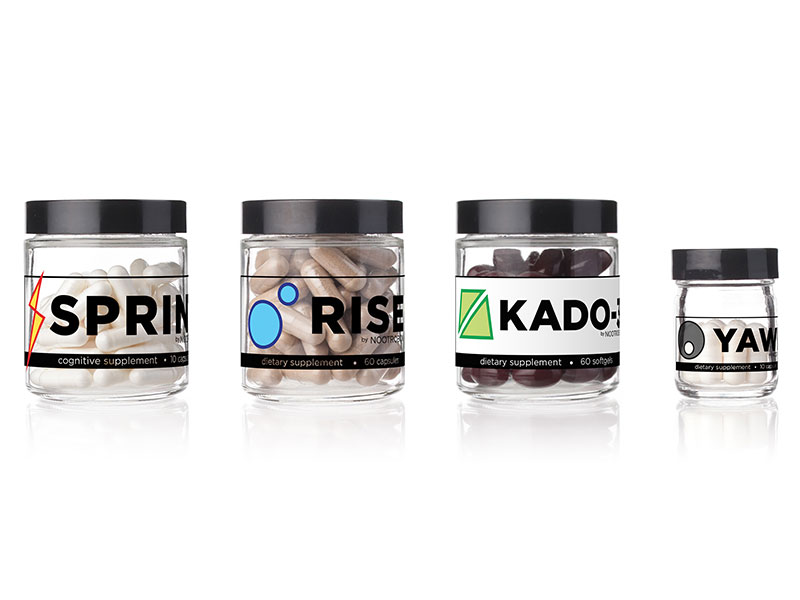Biohacking: the controversial trend that’s taking over Silicon Valley
From intermittent fasting and meal-replacement drinks to nootropics, ‘biohacking’ has found favour with the world’s smartest individuals.

Silicon Valley entrepreneurs will stop at nothing to beat the competition – even if that means 'hacking' their own bodies
In a world increasingly defined by long working hours and fierce competition, optimum productivity reigns. Whether it’s at work or in our personal lives, reaching peak performance – and doing so efficiently – is the dream. This ambition to rise above the crowd is particularly pronounced in cities famed for creativity and technological development; in Silicon Valley, it takes on a life of its own.
The West Coast is a bubble of sorts: Silicon Valley is home to many of the world’s brightest engineers, technicians and developers. It is also regarded as something of a start-up paradise, attracting thousands of ambitious entrepreneurs each year as they bid to change the world one platform or device at a time.
In this highly competitive space, workers are forced to push themselves to the absolute limit. But to these software engineers and CEOs, achieving optimum productivity isn’t an unattainable goal: it’s an equation ready to be solved. No longer limiting themselves to formulas of the technological kind, individuals in Silicon Valley have turned their attentions to matters of the body.
Food for thought
In terms of mainstream attention, ‘biohacking’ first came to prominence in 2014 with the introduction of Soylent, a meal-replacement drink created by Silicon Valley engineer Rob Rhinehart.
Tired of eating fast food at his desk – which was not only unhealthy, but also time-consuming – Rhinehart set about creating an alternative. After studying the myriad nutrients required for the body to function efficiently, Rhinehart formulated a drink that doubles as “a complete meal” – or so the Soylent website claims.
Intermittent fasting
<8 days
Typical fasting period
50%
Reduction in the risk of cancer in mice
With a grainy consistency, the drink has a purposefully bland taste, which some have even referred to as “rancid”. But flavour was never part of the equation: the cessation of hunger is Soylent’s primary purpose.
And if the name sounds familiar, it’s because it was indeed inspired by the 1973 film Soylent Green, a sci-fi thriller that centres on a ‘miracle food’ – which, as it transpires, is made from human corpses.
The name, however, hasn’t put investors off: in March 2017, a group of venture capitalist firms invested $50m into Soylent, adding to the $22.4m secured in previous funding rounds. Among those to invest were major players GV (formerly Google Ventures), Tao Capital Partners, Lerer Hippeau and Andreessen Horowitz. Clearly, there is an appetite for products that circumvent the rules of nature in order to maximise individual output.
“We are in a culture where optimisation is highly valued,” Dr Niketa Kumar, a clinical psychologist based in Silicon Valley, told The New Economy. “Biohacking is marketed as a method for gaining a competitive edge. We are also in a culture where productivity (output in relation to effort) is lionised.” It’s perhaps unsurprising, then, that various other forms of biohacking have entered the Silicon Valley zeitgeist since Rhinehart concocted Soylent.
Power hungry
Perhaps the most popular form of biohacking is intermittent fasting. Silicon Valley’s movers and shakers are now abstaining from food for days at a time in order to optimise both their professional and personal lives.
One of the loudest voices on the scene is Geoffrey Woo, CEO and co-founder of HVMN, a start-up specialising in biohacking. Woo told The New Economy: “While building HVMN, I began tinkering and investigating all sorts of self-experiments and ‘biohacks’ to improve cognitive and physical performance.”
Silicon Valley’s competitive nature encourages some to go to extraordinary lengths to not only succeed, but to become the very best
Having been inspired by TED Talks on how fasting can jump-start the growth of new brain cells, as well as the work of Dr Valter Longo on the consequent longevity of such a routine, Woo began fasting.
“I was already primed to give it a go, and jumped into doing 60-hour fasts (Sunday dinner to Wednesday breakfast),” Woo said. “At first it was very difficult, but eventually the entire company started fasting together.”
Participants fast for anywhere between 14 hours and eight days at a time. For most of us, the idea of not eating for days on end conjures images of distraction and exhaustion – hardly elements conducive to high productivity.
But proponents of intermittent fasting maintain that it works wonders. In fact, Woo said his own personal benefits have included “mental clarity and increased focus”.
Woo added: “Productivity is not just improved by the increased focus and clarity, [intermittent fasting] also removes the distraction of having to think about food every few hours. So when I fast, I have very long working blocks.”
The scientific theory behind intermittent fasting centres on ketones. When the body lacks calories to burn, it turns to fat for energy instead. This process produces ketones, which some consider to be a ‘super fuel’ for the brain that enhances mental clarity and performance.
There are other surprising benefits, too: studies on mice, for example, have shown intermittent fasting can extend life expectancy and improve cognitive performance.
“In mice, we extended lifespan and reduced [the risk of] cancer and inflammatory diseases by about 50 percent,” Longo told The New Economy. “In humans, we saw decreases in risk factors for diseases including cholesterol, blood pressure, inflammatory markers, IGF-1 [insulin-like growth factor 1], C-reactive proteins [and] fasting glucose.”
A 2014 study conducted by Longo and published in Cell Stem Cell indicated that prolonged fasting reduces the immunosuppression and mortality brought on by chemotherapy. More recently, a 2018 study published in Cell Metabolism by scientists from the National Institute on Ageing – a division of the National Institutes of Health – found that eating just one meal a day ensured “better outcomes for common, age-related liver disease and metabolic disorders” in mice. The study also supported Longo’s longevity hypothesis.
With a growing base of evidence to support the health benefits of intermittent fasting, it’s unsurprising the practice is rising in popularity. Through HVMN, Woo has created an online community called WeFast, which boasts some 13,000 members on Facebook alone.
The group provides advice and support to fellow online members, while Silicon Valley residents often meet in person to literally ‘break fast’ each month. With many participants wearing monitors at all times, glucose and ketone levels can also be shared, enabling individuals to ‘hack’ their bodies in every sense of the term.
Smart drugs
For those seeking a shortcut to ketone power – or, indeed, to double up during their non-fasting days – nootropics present an attractive solution. Also known as ‘smart drugs’, nootropics are supplements that can enhance cognitive function, with advocates contending they positively impact creativity, memory and motivation.
“Nootropics help by doubling down on certain metabolic pathways triggered by fasting, or supply helpful cellular building blocks or signalling molecules that aren’t typically found in a normal diet,” Woo explained.
One of the best-known players in the market is Moon Juice. According to the company’s website, its flagship product, Brain Dust, is an “adaptogenic blend of enlightening superherbs and supermushrooms” that enhances focus and mental stamina, as well as alleviates stress and promotes a positive mood.

Such products aren’t just limited to tech engineers in Silicon Valley, either: smart drugs are finding favour with students, too. According to a study of close to 80,000 people published in the International Journal of Drug Policy in August, 14 percent of participants said they had used cognitive-enhancing stimulants at least once in 2017, up from five percent in 2015.
As pressure mounts to achieve exceptional results in a saturated graduate pool, it is easy to see why more students are turning to smart drugs to instantaneously enhance their performance during pivotal moments in their studies, such as examinations.
13,000
Number of WeFast Facebook members
But some, like Kumar, have their doubts about resorting to such hasty remedies: “It is an example of an extreme ‘quick fix’ way of seeking change. I believe that, on one level, it is easier to take extreme measures than to try and make more balanced change over the long term. With biohacking, you feel something pretty quickly and people notice this new feeling and see it as an affirmation of the change they’re seeking.”
Uncanny valley
While biohacking is gaining traction in other markets, the trend continues to be concentrated within Silicon Valley – for the time being, at least. Undoubtedly, this can be explained by the area’s unique culture and exceptionally competitive environment.
“It’s akin to an intellectual battlefield where there are drastically different social and economic rewards for being the number one versus the number two start-up in a market,” Woo said. “Hence, engineers and entrepreneurs in Silicon Valley are highly motivated to optimise every single possible edge against the competition.”
Woo believes Silicon Valley’s “especially open and experimental” environment is also a factor: “[It] accelerates the translational work necessary to bring research and data buried in scientific literature and translate it to best practices. What might have taken a concept years to broadly disseminate now takes weeks given the interconnectedness of the Silicon Valley communities.”
The tech hub’s competitive nature, meanwhile, encourages some to go to extraordinary lengths to not only succeed, but to become the very best. “I think the values of optimisation, productivity and competition are rampant in Silicon Valley,” Kumar said. “I also think the culture… prioritises professional achievement above other areas of life. When self-worth depends on our success professionally, we become motivated to go to extreme measures.”
As with anything in life, quick fixes are rarely sustainable. A trend like biohacking may work for some, but it could very well be dangerous for others. With research into intermittent fasting, meal-replacement drinks and nootropics limited – particularly with regard to the long-term physical and psychological implications for different genders – it is dangerous to take their supposed benefits at face value.
“Hunger – and the pursuit of nourishment – is one of the most basic human drives,” Kumar said. “One of my concerns with biohacking is that people are teaching themselves to ignore basic signals within themselves.” Who knows what impact this could have on an individual further down the line.
Silicon Valley is home to some of the most intelligent individuals on the planet – if anyone were to be aware of the potential risks of biohacking, it would be them. And there certainly is some logic behind the practice: self-optimisation is hard to argue with.
Excess, on the other hand, is not. Perhaps a balance of eating less and taking proven nootropics – while not forgetting one of the greatest pleasures on this Earth, food – is key to not only optimum productivity, but an optimal life, too













